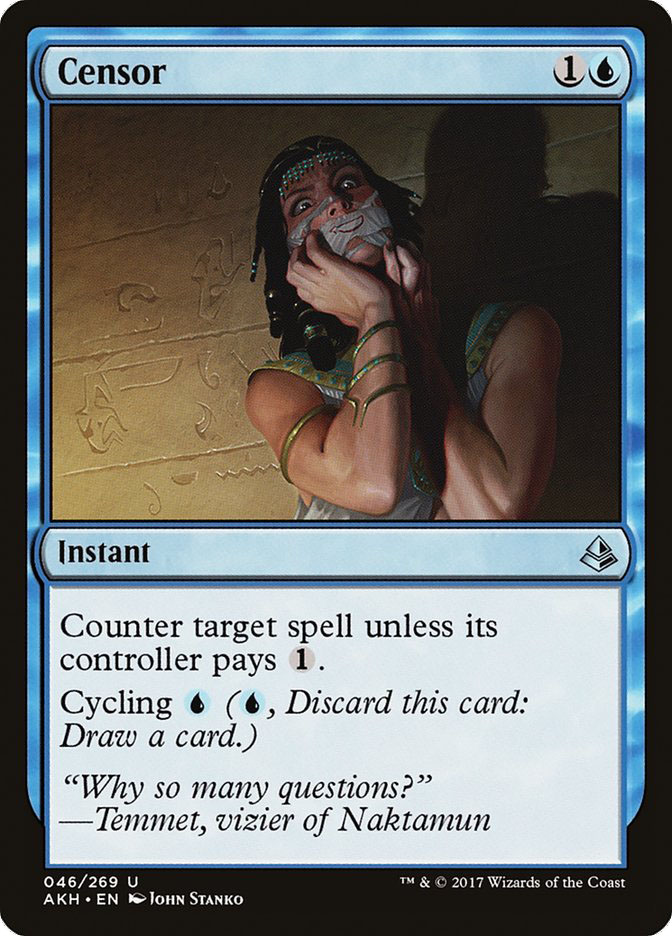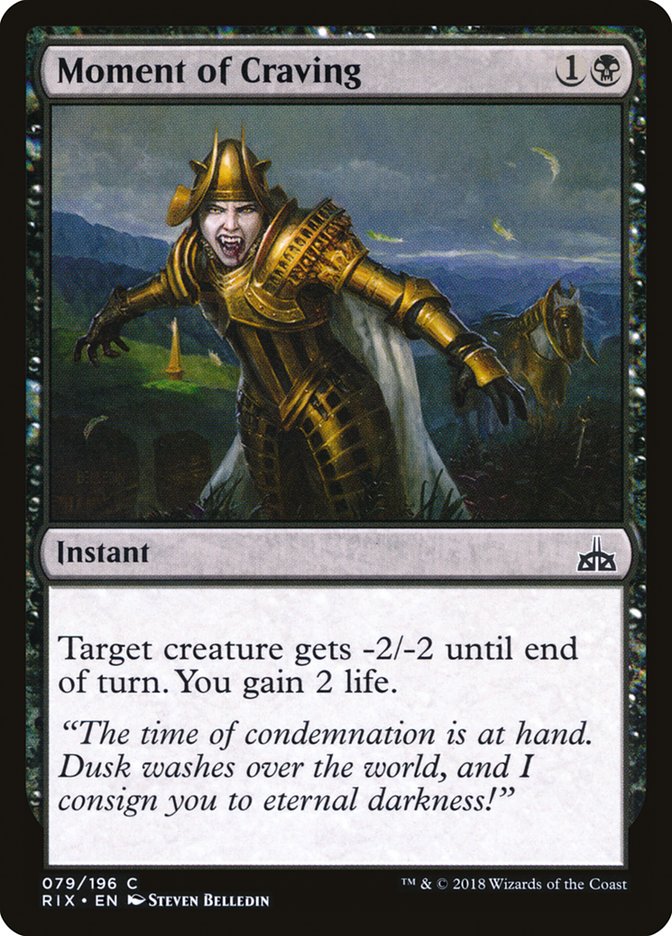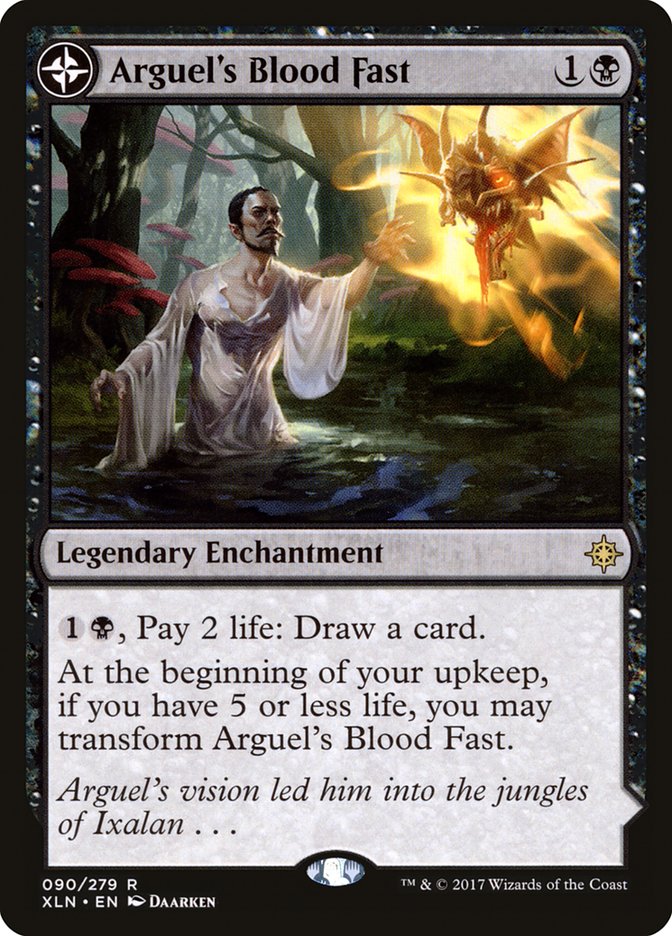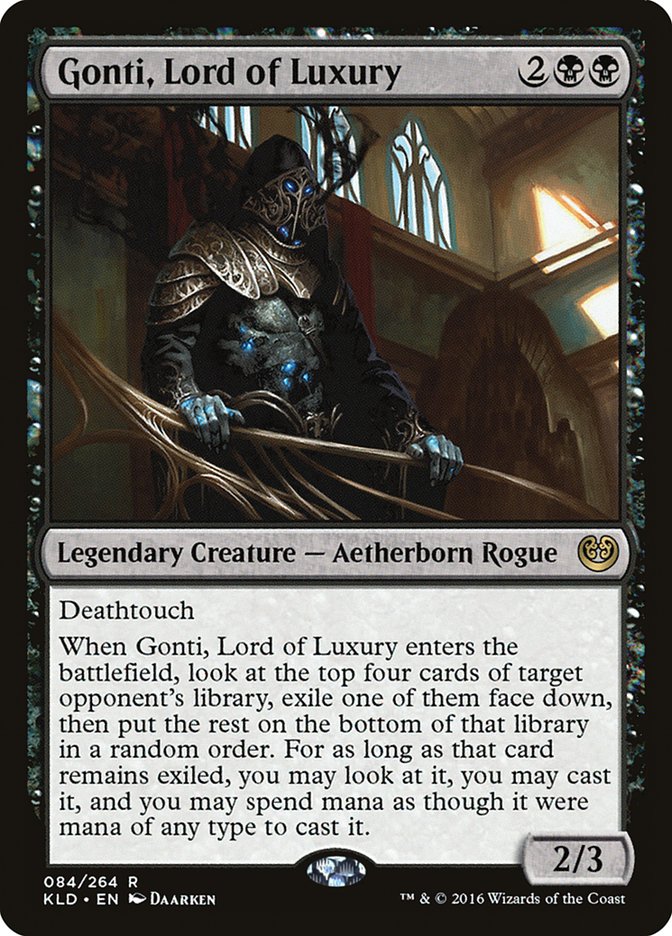The excitement from my spirit planeswalker, Jace, the Mind Sculptor, being
unbanned created a distraction for GP Memphis last weekend. It was very
difficult to focus on Standard when Modern suddenly became my favorite
format! I fought the urges to jam U/W Control for a few weeks and prepared
for what would be a very eventful Standard tournament.
Standard and Modern are in wonderful places right now. The obvious
resurgence of control in Modern after the unbannings was a given, but
Standard also has a healthy representation of each archetype. The most
aggressive strategies are still potent, whether that’s Mono-Red Aggro, R/B
Aggro, W/G Tokens or Mardu Vehicles. Each of these decks has the capability
to take down a tournament, but we aren’t here to talk about the viability
of little creatures.
Aggro has been the king of the castle for quite some time, periodically
usurped by the top midrange deck. Midrange decks still have the potential
to rise to the top as we saw last weekend, with G/R Monsters taking the
title in Memphis. G/R Monsters is a perfectly built midrange deck, putting
early pressure on but always finishing with four and five mana threats. In
the same ring, we saw the MTGO all-star B/U Midrange piloted by some of the
best players in the game. B/U Midrange takes all the best creatures from
the two colors and meshes them altogether with The Scarab God leading the
squad. W/B Tokens, Grixis Energy, and Vampires (piloted and developed by
#TeamCardHoarder member Jack Kiefer) wrap up the top tier of the midrange
category in “decks to beat.” But the best is always saved for last, my
friends.
Control commands the most power, utilizing cards that are significantly
higher on the power level scale. This shouldn’t be new or controversial,
because we control players typically pay a premium for that type of card
strength. When I tap six mana for a spell, it better rock the battlefield,
and fortunately, it does. Torrential Gearhulk has been the go-to win
condition for control decks for quite some time, and it only gets more
powerful after each set. Once Vraska’s Contempt was printed, it became very
difficult for me to divorce from the flash Construct as my win condition of
choice. The Scarab God is still the perfect complement, allowing a late
game coup de grace against all archetypes equally. I predicted that control
would have it easy after the nerf of Mono-Red, and I was half right. Grixis
Control still struggles against the quick onslaught of red creatures, but
luckily there are other options.
I discussed previously that other flavors of control would be equally
powerful if the same formula is followed. Four Glimmer of Genius, four
Torrential Gearhulk, two Scarab Gods, and four copies of Censor is the base
for my deckbuilding in Standard now. The most controversial of that list
has become Censor. For some odd reason, Censor has fallen out of favor with
many players. I notice fewer in each decklist, which is puzzling. A card
like this makes hitting land drops significantly easier. Hieroglyphic
Illumination can fit the same slot, hitting land drops with some upside.
The warning I give to players that choose the Inspiration over the Force
Spike is the minimal upside of the former. Censor is two mana and is a hard
counter for the better part of the game. It becomes weaker much later, but
at that point the other spells we have enlisted pick up the slack. Censor
counters the deadliest of threats each turn or cantrips. Hieroglyphic
Illumination is a net gain of one card if cast in the late game or one card
total when cycled. Theoretically it is no contest and in practice the same
has held true. With Glimmer of Genius and Vraska’s Contempt available, four
mana spells have no place in control unless they’re game-breaking. Having
the cycle option does make it feasible to include, but Censor takes the
slot with authority.
This framework naturally led me to U/B Control, where I attempted to take
on the field without a third color. I’ve been successfully competing in
Standard with Grixis Control for so long that it became difficult to move
into a fresh style. I was frustrated with the difficulty I was having
against Mono-Red, even after they were hamstrung with the removal of
Ramunap Ruins. I adjusted the main deck with the inclusion of Magma Spray
to take them to the cleaners, which worked somewhat, but it hurt my other
matchups significantly. Two or three additional removal spells made the
deck much less consistent against decks that did not use early creatures to
start the clock.
My teammate, Joe Lossett, had a great deal of experience with U/B Control
and boasted about a great Mono-Red matchup. I had to see this for myself
but was also worried that the lists that were running around fell into the
same trap that Grixis had. Moment of Craving was one of my top picks from Rivals of Ixalan to help control decks in the new format. Players
that have been crushing opponents with U/B Control have multiple copies in
the main deck, which I found to be as dangerous as the Magma Spray
incident. I played the mirror five times last weekend and came out with a
4-1 record, taking advantage of players that metagamed too hard for aggro
strategies.
I found in testing that U/B Control is naturally good against fast creature
decks for a couple reasons. The biggest factor that causes U/B Control to
get an easy win is Fatal Push. Fatal Push has Legacy power and is Standard
legal. It’s better in older formats but does give a lifeline to all
black-based control decks. These control decks would cease to exist without
the one mana death spell to early threats. When Grasp of Darkness rotated,
black-based control was fully replaced by red-based ones. Harnessed
Lightning was the only way to go then, and the combination of Vraka’s
Contempt + Moment of Craving is enough to make black the dominant color of
removal again.
Since GP Memphis, I have made significant changes to the deck. The old list
was strong, guiding me to an 11-4 record and gaining me the two points I
needed for Silver! I lost the last round to Brad Nelson on the back of
Arguel’s Blood Fast (which cost me two other matches as well), so the
changes reflect a powerful answer to that card.
Creatures (8)
Lands (26)
Spells (26)

My decklist from last weekend was more uniform than this one. The addition
of Aether Hub and a complete sideboard overhaul was triggered by the few
weaknesses I saw in the tournament. Glint-Sleeve Siphoner is a boss and
needs to be included as long as control is this popular. I went 4-1 against
the mirror, but it wasn’t because of the composition of my deck. I had to
get lucky a few times and the results didn’t hide that reality from me.
This sideboard is equipped to deal with midrange decks, control mirrors,
and keep the necessary amount of aggro hate without giving up percentage
points. I had an additional Moment of Craving, Contraband Kingpin, and a
Bontu’s Last Reckoning in the last list that have since been removed. The
two Mono-Red hate cards were removed because of how good that matchup is to
begin with. I still think that both are required to seal up a few gaps in
the game early, but their late game sideboard plan just doesn’t cut it
against U/B Control. Four Vraska’s Contempt and Torrential Gearhulk put to
rest any delusions they have of going big against the control flagship.
I added one copy of Arguel’s Blood Fast, which should have been there
originally. I was stubborn on adding the card, due to how I dismantled each
opponent that cast it during testing. The problem was that dismantling took
place while I piloted Grixis Energy with four copies of Whirler Virtuoso in
the sideboard. I didn’t make the connection that it was just bad versus
Grixis, but fantastic against U/B. I think the addition of Glint-Sleeve
Siphoner and Vraska, Relic Seeker will be a tremendous boost to opposing
black enchantments. Applying pressure against a deck that has sideboarded
out early removal is enough to make drawing cards at two life a price too
high to commit to.
Sideboarding in early creatures with control decks is always very tricky
for opponents. It’s a tough sell to keep in a bunch of Fatal Pushes to
handle a couple two-drops that may, or may not, be coming in. Having cards
like Fatal Push rot in your hand is enough to cause a loss on its own, so I
don’t pity those who have this conundrum against us. If you face this
issue, look for Aether Hubs. If your U/B opponent has them, they have
Glint-Sleeve Siphoner. If your opponent doesn’t have early energy
indicators, then it’s relatively safe to drop the early removal. In
scenarios where the opponent doesn’t have Aether Hub but you know they have
Glint-Sleeve Siphoner, I leave in two copies of Fatal Push and depend on
Vraska’s Contempt if I fail to draw one early. Without early energy, you
aren’t punished as badly for missing the removal spell the turn they cast
it.
The most rogue aspect of this U/B Control deck is main deck Gonti, Lord of
Luxury. This was my brain child at the beginning of testing, and it was a
smashing success right off the bat! I tried to think of matchups where it
was a complete dud and all I could come up with was Mono-Red. Even in that
matchup, it still provides a damage soak as well as a chance to get lucky
with a useful spell of theirs. In each other matchup, Gonti is very strong.
It single-handedly takes it to the mirror, removing a win condition or
counterspell, making their long game weaker.
Deathtouch is the key word of the day, making it a devastating blocker
against each midrange deck in circulation. The synergy between Gonti and
The Scarab God needs no explanation. There weren’t many matchups where I
sideboarded it out, and it won me many games against decks I had no
business defeating. These victories ranged from nailing a Ixalan’s Binding
on my Torrential Gearhulk with my opponent’s own Cast Out to casting my
opponent’s Scarab Gods throughout the tournament. It took me getting
whipped around by Gonti for months to finally give it a chance in my
control decks. Double black is no problem in these two-color decks, so
welcome aboard my Aetherborn friend.
I plan on keeping current with Standard for my MTGO addiction, as well as
some weekend casual play, but the lion’s share of my focus will move to
Modern after this week. I gave the war everything I got, and it would be
insulting to our blue overlord if he was unbanned after all these years
only to have me write about Standard! With that in mind, I think Standard
is in nearly perfect shape. Each archetype is viciously competitive and no
matchup is a guarantee. It feels better than the cliche’ rock, paper,
scissors formats of old, with play skill being the chief decider in
matchups.
In my last round of GP Memphis, I played badly against Brad. The matchup
was bad for him, but with an elevated level of play he was able to steal
game 1 from me. As I fell in game 3, I thought about ways I could have
easily taken the first game. It bothered me at the time, but after some
reflection of that match and others, the format is as healthy as it gets.
If these archetypes I discussed in the article don’t tickle your fancy,
there is even God-Pharaoh’s Gift, a fringe combo deck that can compete with
the best of them!
But we’ll get to that later…









